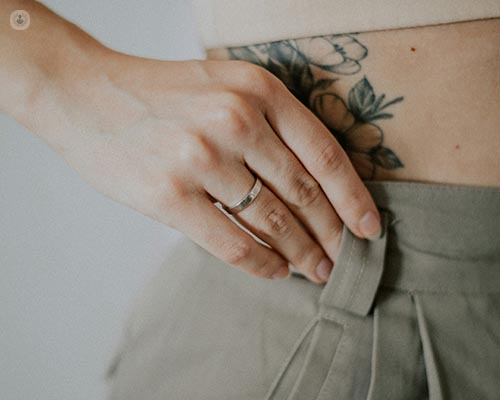PicoSecond laser tattoo removal: your comprehensive guide
Escrito por:Tattoo removal has become a popular procedure for those wishing to remove their ink. With advancements in laser technology, the process is now more accessible than ever. However, it involves several considerations, from understanding the procedure to anticipating costs, safety, and aftercare. Renowned advanced aesthetic medicine specialist Dr Tracy Xu provides a comprehensive guide to help you navigate the path to tattoo removal.

Understanding the tattoo removal process
Laser tattoo removal is the most common method for erasing unwanted tattoos. This technique uses concentrated laser energy to break down the ink particles, which the body then naturally eliminates. While effective, it’s important to set realistic expectations and understand the nuances involved.
What factors should I consider before removal?
Cost: The price of tattoo removal varies widely, depending on the technique behind the laser device, experience of the practitioner, size of the tattoo and the number of sessions required. PicoSecond laser is the most advanced laser that emits Ultra Short Pulse (a 1,000,000,000 of a second), which minimises the risks of hyperpigmentation in darker skin types, and therefore is more expensive than the traditional Nd;Yag Q-switch laser.
Small tattoos may only need a single session costing around £150, while larger tattoos could require multiple treatments, potentially exceeding £1,000.
What are the limitations linked to tattoo removal?
- The process can be uncomfortable and is often described as a slow journey, sometimes requiring 10 or more sessions.
- Complete removal is not always possible, and some ink residues may remain.
- Certain ink colours, such as yellow, green, and purple, are more challenging to fade than black, blue, and red.
Who should avoid tattoo removal?
Pregnant individuals should avoid laser tattoo removal because of potential risks to the baby. Additionally, those with a suntan or fake tan should wait until it fades to reduce the risk of complications.
Safety and choosing the right practitioner
Safety is paramount in tattoo removal. You should ensure that the practitioner is experienced and holds the necessary qualifications and insurance. It is advisable to opt for someone registered with recognised standards in training and skill, and avoid those with minimal training.
What happens during the removal session?
Preparation involves shaving the area and possibly applying a numbing cream. During the session, you’ll wear protective goggles, and a handheld laser device will be used on the skin. Sessions typically last between 10 to 30 minutes, with the tattoo gradually lightening after each treatment.
Post-treatment care and risks
After treatment, it’s common for the skin to be red and possibly form a rash. Applying ice or aloe vera gel can soothe the area. Protect the treated skin from the sun and avoid picking at scabs to ensure proper healing. While most people experience minimal side effects, there’s a small risk of skin discoloration or scarring.
How can I handle complications?
If you encounter any issues post-treatment, such as healing problems or changes in skin pigmentation, contact the clinic where you received treatment. They can provide guidance and, if necessary, medical attention.
Tattoo removal is a significant decision requiring careful consideration of the costs, process, and potential outcomes. By choosing a qualified practitioner and following the recommended aftercare, you can navigate your tattoo removal journey with confidence. Remember, patience and maintaining realistic expectations about the results are key.
If you require tattoo removal and would like to book a consultation with Dr Xu, simply visit her Top Doctors profile today.


